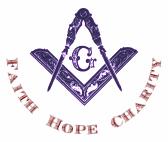Freemasonry's Scottish Roots

Main | Speaking | Web Resources | Erik's Masonic Journey | Curriculum Vitae
Copyright © 2010-2020 Erik L. Arneson
This short paper was originally published on the Masonic Education portion of the website for Washington Lodge No. 46 and used as the basis for a presentation to Portland Lodge No. 55. It makes great in-lodge education.
Origins in Scotland
King Macbeth of Scotland was killed in the year 1057 by the man who would then be crowned Malcolm III. This new king, later that year, granted a charter to the Mason's Company of Glasgow. In contrast, the Masons' Livery Company in London may have come into existence as late as 1220. This company would have overseen operative stoneworking, or work by actual masons practicing real architecture, and not the speculative form that Freemasonry has taken today. We are still discovering how, when, and where the transition from operative to speculative masonry occurred.
There are multiple theories regarding the origins of modern Freemasonry. Records prior to the organization of the first English grand lodge in 1717 are incomplete, so many authors have taken it upon themselves to invent fantastical histories to describe our past. Unfortunately, most of those theories are not supported by the existing evidence, and only in recent years have historians uncovered solid clues to the roots of our ancient fraternity. Though for years it was assumed that Freemasonry was originally an English institution, it now appears that it was actually Scottish. A set of rules and guidelines resembling the modern form fraternity were rediscovered in the Schaw Statutes, two documents issued by the Master of Works in Scotland in 1598 and 1599.
These statutes are significant to Freemasonry for a number of reasons. To begin with, both were issued on December 28th of their respective years, which indicates that the statutes were probably drafted and approved on December 27th. Most Masons will recognize this as being the Feast of St. John the Evangelist, one of the patrons of our fraternity. In addition, the statutes lay out rules for wardens and fellow crafts and place restrictions on Masons interacting with cowans, or non-Masons. Peculiarly, there is an emphasis on the importance of the Art of Memory in the Schaw Statutes, which some historians theorize is directly tied to the influential Renaissance occult mnemonic system.
Historian David Stevenson, upon whose work most of this article is based, asserts that the following Masonic elements originated in Scotland:
- Earliest use of the word "lodge" in a Masonic sense,
- Earliest attempt to organize lodges on a national level,
- Earliest examples of "non-operative" men joining lodges,
- Earliest evidence linking lodge Masonry with ethical issues through the use of symbols,
- Earliest references to the Mason Word,
- Earliest appearance of the terms "entered apprentice" and "fellow craft" as the names of the first two degrees, and
- Earliest evidence of a third degree being conferred.
While the Schaw Statutes strongly indicate that Freemasonry began in operative lodges of stonemasons, the gradual inclusion of "accepted" or non-practicing Masons is an historical phenomenon we are still trying to unravel. Currently, the first known "gentleman mason" is John Boswell of Auchinleck, who was a member of the Lodge of Edinburgh in 1600. A few isolated groups of accepted Masons joined Scottish lodges during the 17th century, but it doesn't seem to be until about 1700 that non-operatives began to be initiated in large numbers.
While it may be disappointing to some that the origins of Freemasonry cannot be reliably tied to such fantastic sources as Atlantis, ancient Egypt, or the Knights Templar, many fascinating stories still manage to emerge from our past. By exploring the books listed below, one will discover much about Freemasonry's common past with Renaissance paganism, Rosicrucianism, and the fathers of modern thought. Many of these influences first intermingled with Freemasonry in its ancient Scottish homelands.
Further Reading
Not all references cited below are directly used in this article; some were mentioned in the lecture, however.
- Coil, Henry W. "Culdees." Coil's Masonic Encyclopedia. Macoy Pub & Masonic Supply Co (1996). http://www.librarything.com/work/477366/book/96259926.
- "Culdees." 2013. Wikipedia, the Free Encyclopedia. http://en.wikipedia.org/w/index.php?title=Culdees&oldid=541135673.
- Kinney, Jay. The Masonic Myth: Unlocking the Truth About the Symbols, the Secret Rites, and the History of Freemasonry. HarperOne (2009). http://www.librarything.com/work/8921098/book/73796213.
- Leadbeater, C. W. 1998. Freemasonry and Its Ancient Mystic Rites. Gramercy (1998). http://www.librarything.com/work/307562/book/62386735.
- Ridley, Jasper. The Freemasons: A History of the World’s Most Powerful Secret Society. Arcade Publishing (2002). http://www.librarything.com/work/964/book/62386417.
Robinson, John J. Born in Blood: The Lost Secrets of Freemasonry.
- Evans & Company (1989).
- Stevenson, David. The Origins of Freemasonry: Scotland’s Century, 1590 to 1710. Cambridge University Press (1990). http://www.librarything.com/work/328632/book/62386227.
- Yates, Frances A. The Art of Memory. University Of Chicago Press (2001). http://www.librarything.com/work/21081/book/62386018.
- Yates, Frances A. The Rosicrucian Enlightenment. Barnes & Noble (1996). http://www.librarything.com/work/21305/62386016.
This website is a participant in the Amazon Services LLC Associates Program, an affiliate advertising program designed to provide a means to earn fees by linking to Amazon.com and affiliated sites.